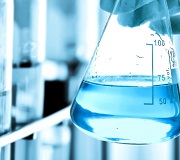Isopropanol is one of the secondary alcohols, used in a wide range of applications and consumption sectors. The production of solvents has been isopropanol’s largest outlet for years, though this trend has been gradually reversing. Other major uses of isopropanol include the production of intermediates (e.g. acetone), paints, inks, general-purpose cleaners, herbicides, personal care and cosmetics products, disinfectants, pharmaceuticals, deicing agents, to name only a few. The versatile character of isopropanol applications is predicated on its properties. For instance, the prospective use of isopropanol is to serve as an effective medium for the extraction and purification of natural products, such as vegetable and animal oils (employed in the food industry, cosmetics and pharmaceuticals). This application depends on isopropanol property to be relatively non-toxic and to form oils with a shelf life higher than vegetable oils extracted with the help of other solvents.
Another prospective use area is the microbial production of isopropanol to act as a renewable non-fossil petrochemical resource. Such technologies are being currently developed and may prove to be cost-effective. The technologies for the isopropanol production from renewable feedstock may play an important role since isopropanol is currently produced from a petroleum product, propylene. Among many factors, the dependence on feedstock, petroleum hydrocarbons, makes the isopropanol market highly susceptible to the current fluctuations of naphtha and crude oil prices. Oil price fluctuations affecting the isopropanol market act in synergy with multiple forces. Firstly, the isopropanol market is driven by its demand in consuming sectors, which is in turn influenced by many factors. Secondly, the supply situation is of key significance. This situation hinges on various production-related elements, like turnaround schedules or force majeure circumstances (e.g., the recent fire at 30k mt/y Tasco Chemical’s isopropanol facility in Taiwan). Market regulation is paramount for both the isopropanol market and consuming sectors. For instance, the recent anti-dumping investigation in the USA in relation to acetone is a factor that is likely to adversely impact the stability of acetone and isopropanol markets (acetone production remains a large outlet for isopropanol). The acetone-related antidumping petition was filed on behalf of several US companies that demanded to investigate acetone exports to the US from several European, Asian and African countries. Apart from tariff regulation, environmental regulation is also a major factor which impacts the isopropanol markets. For instance, government regulations covering volatile organic compounds (VOCs) have been and will continue to be, a major consideration in future planning by isopropanol producers.
The ongoing upward pressure on the European isopropanol costs (current spot prices for technical-grade isopropanol vary within the range of €970-€1,025 per tonne, FD northwest Europe) is the result of interlinkages of such factors. The interplay of such factors regularly becomes the source of uncertainty when the isopropanol market behavior is mostly counterintuitive.
More information on the global isopropanol (IPA) market can be found in the in-demand research report “Isopropanol (IPA): 2019 World Market Outlook and Forecast up to 2028”.
